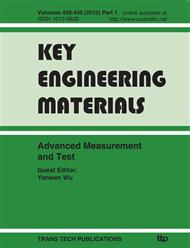p.950
p.956
p.960
p.966
p.971
p.977
p.983
p.989
p.994
Particle Filter with Constraints for Articulated Upper Body Tracking
Abstract:
For sophisticated background, a human body tracking algorithm using particle filter based on a 3D articulated body model is introduced. First, a high-fidelity biomechanical upper body model, which is accurate for representing varies complicated human poses and simple to be developed, has been built. Then sequences of images are obtained by using a stereo camera. After calibration, verification and background subtraction, depth map, foreground silhouette, arms skeleton are chosen to construct the likelihood function. The state vectors describing the human pose are computed by fitting the articulated body model to observed person using particle filter. In order to reduce the computational complexity and the number of particles, constraints are employed to restrict the state parameters. Experimental results show that the proposed algorithm can track human upper body with different poses, different person under different illumination conditions fast and accurately.
Info:
Periodical:
Pages:
971-976
Citation:
Online since:
June 2010
Authors:
Price:
Сopyright:
© 2010 Trans Tech Publications Ltd. All Rights Reserved
Share:
Citation:


